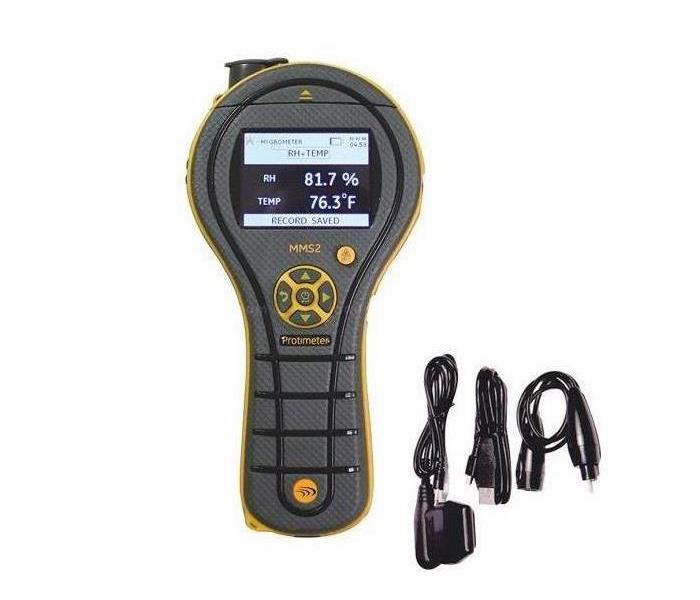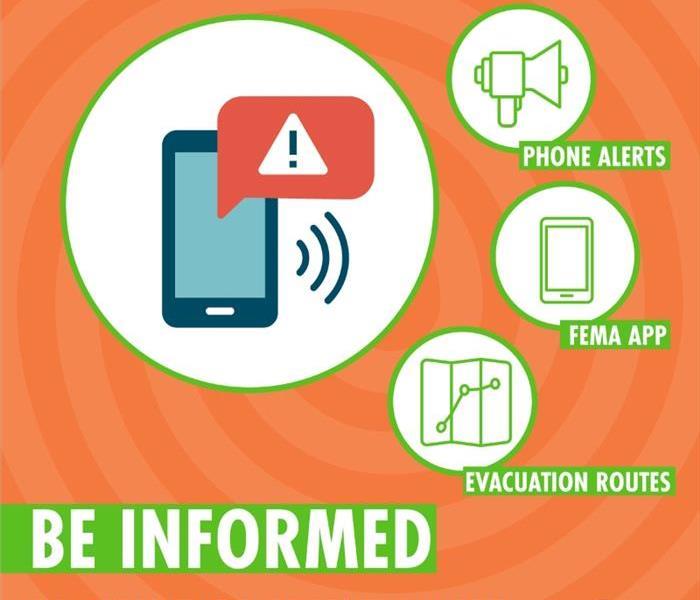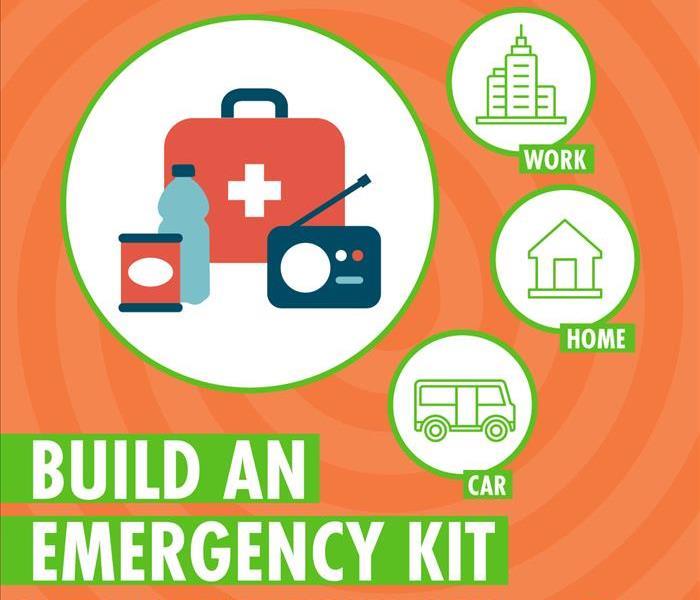Archived Storm Damage Blog Posts
Preparing for Storms With Confidence | SERVPRO® of Southern Washington County
4/9/2024 (Permalink)
 SERVPRO of Southern Washington team is always here for you, if you experience any storm damage call us right away.
SERVPRO of Southern Washington team is always here for you, if you experience any storm damage call us right away.
When tackling a tricky task, how do you approach it? Do you take it all on at once, or do you break it down to the basics and accomplish a little at a time? Sometimes taking things back to the beginning can help you tackle your situation with more confidence.
This is certainly true when it comes to preparing for severe weather and flood emergencies. Floods can be really impactful for our community, so knowing what to do when we are faced with flooding conditions can help you stay in control.
We explain some easy-to-follow flood prevention tips below to help your property stay dry when the spring rain comes to town.
Understanding Your Flood Risk
Floods can happen when Mother Nature brings significant rain to our community, but that isn’t the only way that we can experience floods. Broken water lines, overflowing toilets or tubs, and leaky appliances can all pose serious issues for your home. In addition, our close proximity to Pewaukee Lake and other minor waterways can increase our risk of flooding from time to time.
We especially need to be aware in the springtime during a typical season as the snow melts and the runoff makes its way through our community. Do you know if your property is in a flood zone?
Whether your property is in a designated flood zone or not, it is still important that you know how your yard and home will react when it rains heavily or if we are in a flash flood watch. Low-lying areas can quickly fill up with water, so make sure you have your downspouts on and pointed away from your home and consider adding more length to the spouts to move the water even farther away from your home.
The tree coverage in our community is a blessing in many ways, but having so many leaves around your property can easily pose issues when it starts to rain. Leaves and other yard debris can quickly clog up a gutter, which can lead to pooling on your roof that can infiltrate your attic. Adding gutter covers can help keep that debris out so the water can flow where it needs to.
Additional Preparation
While understanding your specific flood risk is important, we all know that Mother Nature has a mind of her own and that any one of us can be surprised by flooding issues at any time.
If you do suffer from a flood at any point, it can be really frustrating while also being informative at the same time. You can take steps like investing in a professional yard grading to help prevent it from happening again or you can do simple things like landscape around your home with mulch to help absorb excess moisture.
It can also help you keep a closer eye on the inside of your home. You should be checking your windows and doors regularly for signs of moisture and replacing any worn seals right away. In addition, you should also have your sump pump professionally inspected every season to make sure your equipment is ready to work no matter the season.
Start with the basics when it comes to flood prevention, and you will be amazed at how much of a difference it can make! Remember, our water damage restoration team is always here if you need us.
Do you have water damage in your home? Contact us at SERVPRO® for fast recovery.
The Importance of Spring Weather Preparation | SERVPRO® of Southern Washington County
3/10/2023 (Permalink)
 SERVPRO of Southern Washington County is always here for you, if you experience any storm damage call us right away.
SERVPRO of Southern Washington County is always here for you, if you experience any storm damage call us right away.
As spring weather is just within our grasp, it is important to start making the changes and preparations needed in order to keep your home dry and free of storm damage when the first spring thunderstorms come rolling in.
Storm damage can cause widespread issues really quickly throughout your home, so now is the time to address any issues that appeared over the winter season and get your home ready for the rain!
Keep It FlowingOver the course of the winter season, any thaws we had may have felt nice, but they could have been contributing to ice buildup along your roof line and in your gutters. If your gutters can’t flow, water will back up onto your roof. Remove debris and clear the ice when you are able so your gutters can work properly for you.
If you haven’t been checking on your vents continually this winter, do it now! The vents leading outside from your furnace, dryer and even in your attic can become blocked or glazed over with ice or snow. Make sure you clear any blockages so the vents can do their job and simultaneously keep your family safe from danger.
It is also really important to do a thorough check of your outdoor water lines and faucets. Any exposed piping has the potential to freeze and expand if water was caught inside. If the expansion becomes too much, the pipe can burst and can be a massive water issue when the temperatures warm up.
Quickly Fix the IssuesIf you do find any sort of damage around your home, now is the time to fix the problem! The longer you wait, the higher the risk of suffering severe damage. This includes inspecting your roof and doing any necessary repairs right away.
Look for missing shingles, broken gutters or visible damage due to a fallen tree or debris. It doesn’t take much for water to get into your attic and cause havoc throughout your house.
Get Ready for Impending WeatherWith spring showers comes more rain, right? However the saying goes, we all know that springtime can be wet and rainy. If you have a sump pump in your home, make sure it is ready to work ahead of the first spring rainstorm. This can help keep your basement dry throughout the entire season and beyond.
In addition to preparing your home, make sure your family is prepared as well. Go over your storm safety plan and discuss where your safe shelter location is. If any boxes or storage items were put in this location for the winter, find a new home for them during this season. Finally, update and edit your emergency kit to reflect any changes to your family’s needs.
Remember, we are always here for you no matter what season it is! Just call SERVPRO of Southern Washington County if you experience water or storm damage, and we will work hard to return your home to its preloss state as fast and efficiently as we can.
Got water damage? We are here to help 24⁄7 and can restore your home quickly.
When you suffer storm-related damage to your home or business, make SERVPRO of Pewaukee & Sussex your first call.
8/18/2022 (Permalink)
 Lighting showing Storm Damage
Lighting showing Storm Damage
Storm damage is a very real concern for all homeowners. When a storm is in the area, it can make everyone anxious. Unfortunately, experiencing some sort of storm damage is likely at some point during your lifetime.
That being said, just because a storm is coming our way doesn’t mean that you are guaranteed to suffer damages! It all depends on the category of the storm, the location of your home in town and how well-built your home is.
In eastern Wisconsin, we are at risk of severe warm-weather events like tornadoes and severe thunderstorms as well as cold-weather threats like winter storms and freezing rain. We love the Midwest!
When one of these weather events comes to town, we are at risk of three major damages occurring:
Wind
Wind accompanies summer and winter weather. If it blows fast enough, it can cause widespread damage.
While it is true that tornadoes produce some of the highest wind speeds, wind from thunderstorms can be just as devastating. In fact, wind from storms can be over 100 mph.
Strong-enough winds can uproot trees and throw around debris in your yard. Stay inside and avoid windows until the storm has passed and the wind has died down.
Taking the time ahead of the arrival of any storm to clean up your yard and remove any trees or untethered furniture can help reduce your risk of suffering damage due to the wind.
Water
Water can be a great resource from thunderstorms if we are in need of rain for our lawns and gardens, but a lot of it can do incredible damage to your home.
It can leak through windows and down into our basements. And if your basement continually gets wet after storms, it can degrade your foundation and cause mold growth.
Grade your property, and if you do any landscaping, make sure your yard slopes away from your home to prevent water from pooling near your foundation. You can also research building a rain garden! Rain gardens are a great place for all of that unwanted water to flow to.
Your gutters need special attention as well! Blocked gutters can’t function properly and can let water pool on your roof that will eventually leak down your walls.
Impact
When it comes to impact damages, they can be costly and devastating. “Impact damage” come in the form of a fallen tree or some other type of object being thrown into the side of your home.
To prevent this kind of damage, do your best to keep your property free of any external hazards like dead trees or large hanging limbs. Tie down or otherwise secure furniture and other objects left outdoors during a storm to keep them from becoming projectiles.
Overcoming weather-related disasters of any kind is expensive. In fact, in 2021, it was reported that Americans suffered $145 billion in damages to their homes.
If you do discover damage to your home or property after a storm, call us at SERVPRO of Pewaukee & Sussex right away. Our dedication to your restoration will be unmatched, and we will get you back into your home right away.
When you suffer storm-related damage to your home or business, it’s important that you know who to call! Contact us today at (262) 229-7522 to get your storm damage restoration started faster.
Making a Plan/Kit For You & Your Pets for an Emergency
6/24/2021 (Permalink)
 Examples of kit items
Examples of kit items
Make a Plan, Be Prepared.
Being prepared for an emergency event is a very responsible task you can do for you, your family, and your pets.
Make a Plan
-Put a plan together by discussing the questions below with your family, friends or household to start your emergency plan.
-How will I receive emergency alerts and warnings?
-What is my shelter plan?
-What is my evacuation route?
-What is my family/household communication plan?
-Do I need to update my emergency preparedness kit?
-Remember, during a disaster what’s good for you is good for your pet, so get them ready today.
If you leave your pets behind, they may be lost, injured or worse. Never leave a pet chained outdoors.
Remember, during a disaster what’s good for you is good for your pet, so get them ready today.
If you leave your pets behind, they may be lost, injured or worse. Never leave a pet chained outdoors. Plan options include:
-Create a buddy system in case you’re not home. Ask a trusted neighbor to check on your animals.
Identify shelters. For public health reasons, many emergency shelters cannot accept pets.
-Find pet friendly hotels along your evacuation route and keep a list in your pet’s emergency kit.
Locate boarding facilities or animal hospitals near your evacuation shelter.
-Consider an out-of-town friend or relative.
-Locate a veterinarian or animal hospital in the area where you may be seeking temporary shelter in case your pet needs medical care. Add the contact information to your emergency kit.
-Have your pet microchipped and make sure that you not only keep your address and phone number up-to-date, but that you also include contact info for an emergency contact outside of your immediate area.
-Call your local emergency management office, animal shelter or animal control office to get advice and information.
-If you are unable to return to your home right away, you may need to board your pet. Find out where pet boarding facilities are located.
-Most boarding kennels, veterinarians and animal shelters will need your pet's medical records to make sure all vaccinations are current.
-If you have no alternative but to leave your pet at home, there are some precautions you must take, but remember that leaving your pet at home alone can place your animal in great danger.
BUILDING A KIT:
To assemble your kit store items in airtight plastic bags and put your entire disaster supplies kit in one or two easy-to-carry containers such as plastic bins or a duffel bag.
A basic emergency supply kit could include the following recommended items:
-Water (one gallon per person per day for at least three days, for drinking and sanitation)
-Food (at least a three-day supply of non-perishable food)
-Battery-powered or hand crank radio and a NOAA Weather Radio with tone alert
-Flashlight
-First aid kit
-Extra batteries
-Whistle (to signal for help)
-Dust mask (to help filter contaminated air)
-Plastic sheeting and duct tape (to shelter in place)
-Moist towelettes, garbage bags and plastic ties (for personal sanitation)
-Wrench or pliers (to turn off utilities)
-Manual can opener (for food)
-Local maps
-Cell phone with chargers and a backup battery
Include basic survival items and items to keep your pet happy and comfortable. Start with this list to find out exactly what items your pet needs to be Ready.
Your pet kit should include:
-Food (at least a three day supply in an airtight, waterproof container)
-Water (at least three days of water specifically for your pets)
-Medicines
-Medical records, proof of vaccinations, registration and adoption documents (talk to your veterinarian about microchipping)
-First aid kit (cotton bandage rolls, bandage tape and scissors, antibiotic ointment, flea and tick prevention, latex gloves, isopropyl alcohol, saline solution and a pet first aid reference book)
-Collar or harness with ID tag, rabies tag and a leash
-Crate or pet carrier (a sturdy, safe crate or carrier large enough for your pet to stand, turn around and lie down)
-Sanitation needs (litter box and litter, newspapers, paper towels, plastic trash bags and household chlorine bleach)
-A picture of you and your pet together to prove ownership (add species, breed, age, sex, color and distinguishing characteristics)
-Familiar items (treats, toys and bedding can help reduce stress for your pet)
Being safe and prepared is not only a good idea, but a safe one.
*Source: ready.gov
What type of equipment is used to detect moisture in my Germantown, Wisconsin home?
6/16/2021 (Permalink)
 Moisture meter
Moisture meter
Once a water damage hits your home or commercial property, our crew will come out to evaluate the damage. Water damage restoration requires the use of certain equipment. This may include detection devices, extraction equipment, air moving and dehumidification equipment, as well as safety equipment. Simply having access to the right equipment is only part of the process.
Scoping involves locating the areas of the structure into which water has intruded and defining the extent to which structure and contents have absorbed moisture beyond normal moisture levels. Various devices allow a water damage restoration professional to track moisture within a structure. These devices include the following:
- Moisture sensors
- Thermal imaging cameras
- Moisture meters
- Thermo-hygrometers
Moisture Sensors
The moisture sensor is used to detect moisture in carpets and padding. The moisture sensor has sharp probes that penetrate through carpets and pad to determine if water has migrated on the subfloor underneath.
Thermal Imaging Camera
Thermal imaging cameras (also called infrared cameras) are utilized for inspecting and monitoring moisture in building materials. They can show how water traveled throughout a structure, and many times they can indicate moisture that otherwise may have never been discovered. At the end of the project, they provide excellent documentation or proof that drying was successfully completed. Technically, thermal cameras do not display moisture images, but rather infrared images.
Moisture Meters
Moisture meters are utilized to measure the actual moisture content or level of various materials. Some meters are calibrated to measure specific materials; for example, a moisture meter calibrated for drywall will not accurately read moisture content in wood materials. Some meters are adjustable for different types of materials, such as a meter that can be adjusted for both wood and drywall. There are penetrating and non- penetrating moisture meters.
Thermo-Hygrometers
A thermo-hygrometer (sometimes referred to as hygrometers) measures the relative humidity and temperature of air masses. Some thermo-hygrometers also give the restorer the humidity ratio, vapor pressure, and dew point.
If you have a water damage, call SERVPRO of Southern Washington County. We serve Germantown, Hartford, and Richfield Wisconsin just to list a few!! We are always open and always ready to help!
262.229.7522
Hurricane Prep Week Day 4
5/13/2021 (Permalink)
 Hurricane Prep Week Day 4
Hurricane Prep Week Day 4
Being prepared for a disaster such as a hurricane can make all the difference in safety as well as damages. Each day this week we will be posting tips that can help you be prepared for a hurricane or any other major event. There is always comfort in having peace of mind knowing that you are ready.
Day 4 of Hurricane Prep Week is about having an evacuation plan. You should plan your route and have an alternate route in case the first one is not accessible. You may have to evacuate quickly, so you should practice with your household and your pets. You should also remember that you may not have to drive hundreds of miles to evacuate, only far enough away from the evacuation area.
Hurricane Prep Week Day 2
5/11/2021 (Permalink)
 Hurricane Prep Week Day 2
Hurricane Prep Week Day 2
Being prepared for a disaster such as a hurricane can make all the difference in safety as well as damages. Each day this week we will be posting tips that can help you be prepared for a hurricane or any other major event. There is always comfort in having peace of mind knowing that you are ready.
Day 2 of Hurricane Prep Week is about having an emergency kit ready at work, in your car, and at home. This could include a backpack, water, non-perishable food, a blanket, etc. The best place to store the kit is somewhere that you will go to take shelter. Having all your materials in one place and storing them in your shelter location means that you don’t have to worry about getting prepared when a warning is issued. You’re already prepared and can just focus on getting yourself to your shelter. To learn more about what to put in your kit visit https://www.weather.gov/owlie/emergencysupplieskit
 SERVPRO of Southern Washington team is always here for you, if you experience any storm damage call us right away.
SERVPRO of Southern Washington team is always here for you, if you experience any storm damage call us right away.





 24/7 Emergency Service
24/7 Emergency Service





